September 17, 2022 – Lowville
I was joined on Saturday by some of our young volunteers: Sam, Aliya, Liam, and Maggie. I haven’t seem them since the spring, so I got to hear all about the awesome adventures they had over the summer; mostly birding adventures, which are of course the best kind.
We ended up banding 22 birds for the day, and although it was a slower day, we had fantastic diversity. Of the 22 banded, we caught 17 species! I personally really love this time of year because while we may not catch large numbers, we do tend to get great diversity. We also have the time to discuss plumage characteristics and aging in a little more detail on days like this. There was one tense moment when Maggie came running back from net 0, which is very close to the station, anxiously telling us how a Sharp-shinned Hawk was in the net but as she ran to the net to close the pocket to secure the hawk, it managed to flap and free itself before she could get there. The young volunteers were all very disappointed that we so narrowly missed catching this hawk. Hopefully next time we’ll get lucky and it will stay in the net. Unfortunately because we are targeting songbirds and not hawks, the nets we use aren’t very good at catching them (the mesh is too small). For this reason, any hawk that hits the nets is more likely than not to escape. We did however, catch some lovely songbirds. I’d think we’d all likely agree that the highlight of the day was this gorgeous male Mourning Warbler..
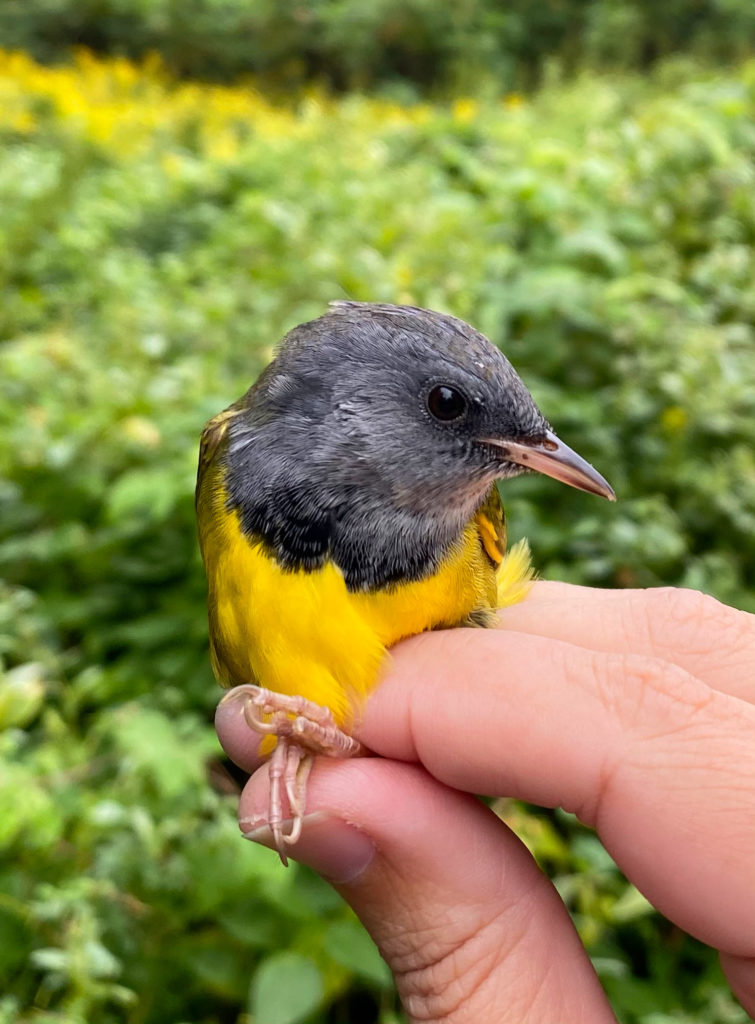
Mourning Warblers are closely related to the elusive Connecticut Warbler. Their behaviour can also be skulky and secretive, similar to Connecticut Warblers. However, they aren’t as elusive or difficult to observe as CONWs.
We caught two thrush species at the same time and managed to take this shot showing two species side-by-side.
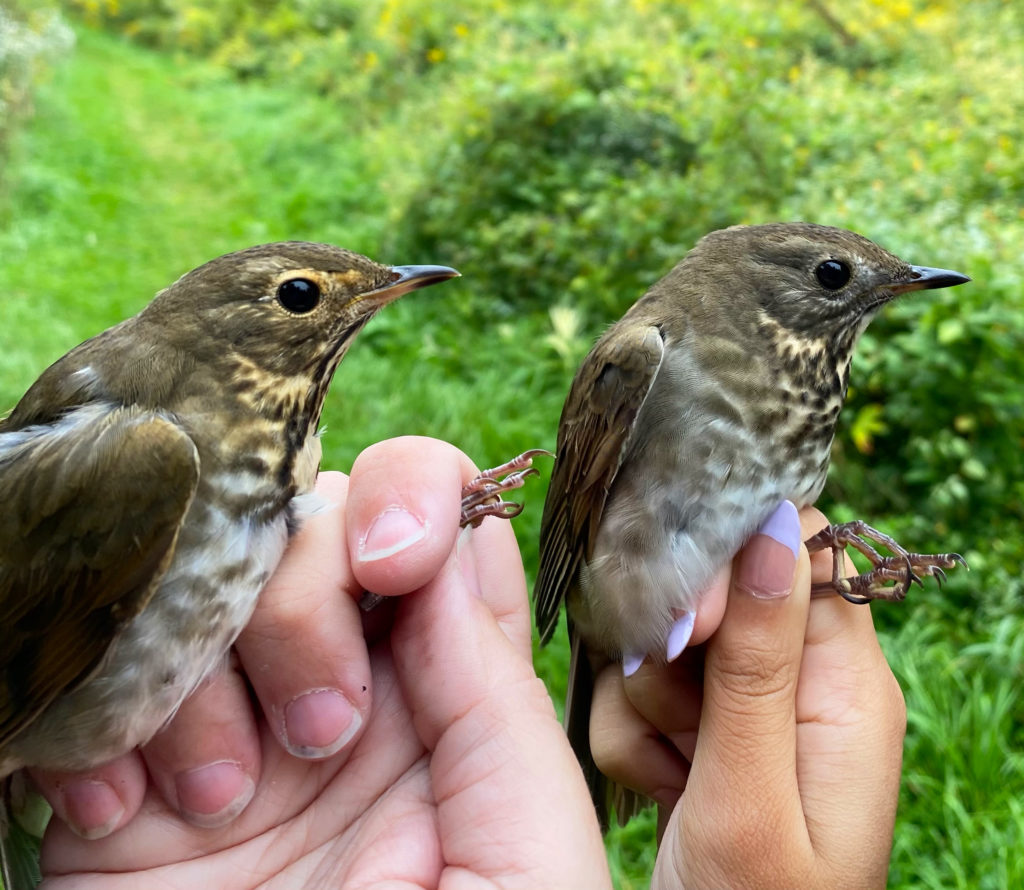
Swainson’s Thrush on left and Gray-cheeked Thrush on the right – notice how the GCTH has plain look to the face (almost totally lacking an eyering) which is one of the characteristics you want to look for to identify them in the field
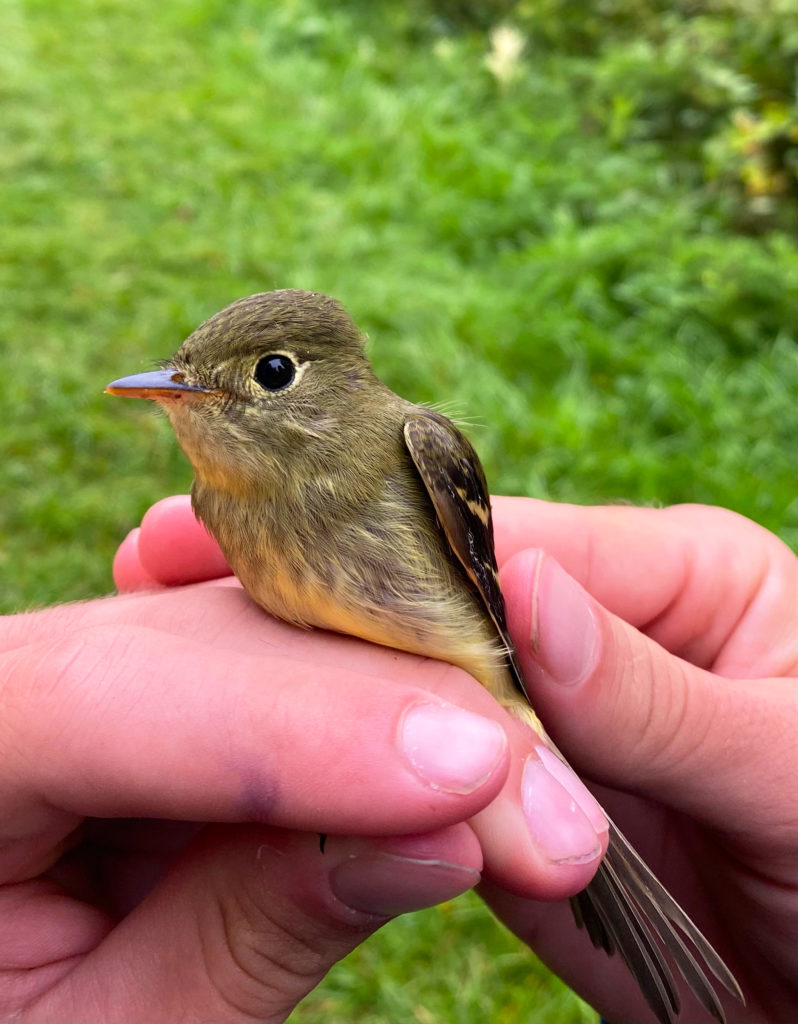
Yellow-bellied Flycatcher – this species is an early season migrant, and it’s starting to get late for them. This could possibly be the last one we see until spring.
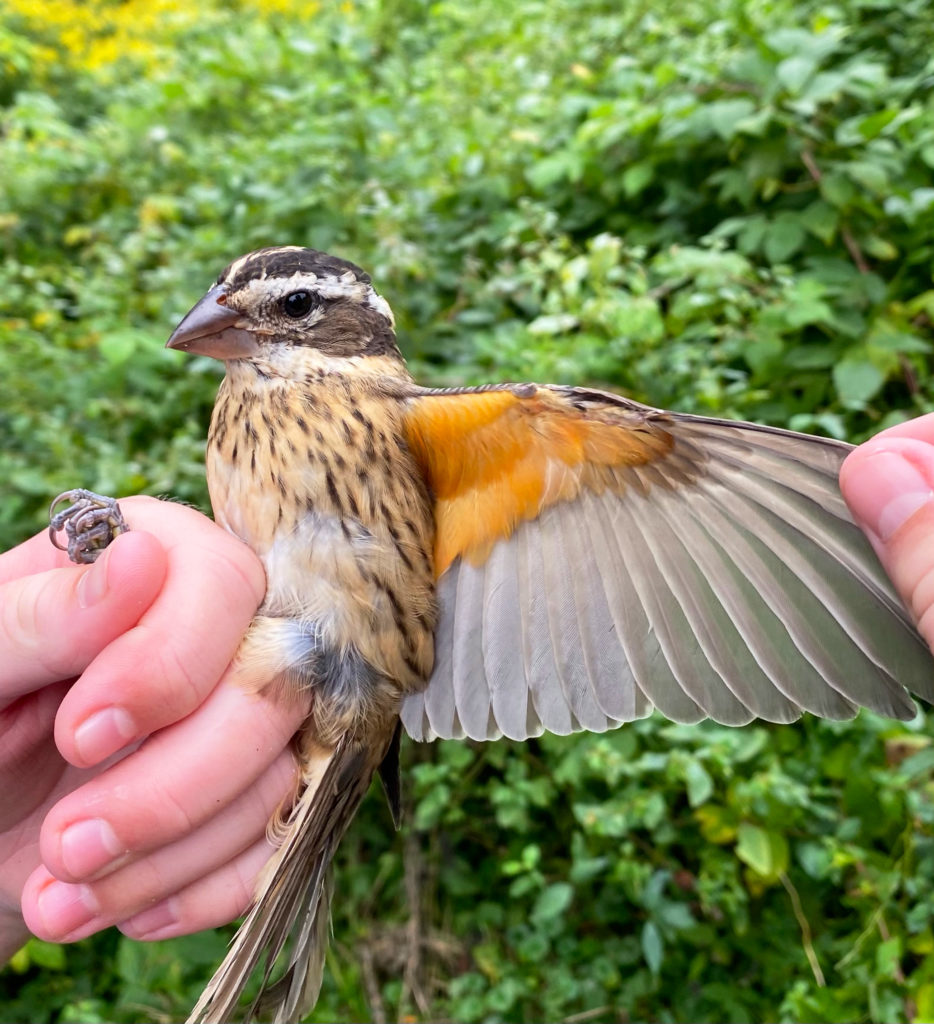
Rose-breasted Grosbeak – Liam decided it was worth risking the painful bite of this grosbeak to get this lovely photo 🙂
BANDED:
1 White-breasted Nuthatch
2 Black-capped Chickadee
1 Carolina Wren
1 Gray Catbird
3 Swainson’s Thrush
1 Gray-cheeked Thrush
1 Least Flycatcher
1 Yellow-bellied Flycatcher
2 Red-eyed Vireo
1 Magnolia Warbler
1 Nashville Warbler
1 Chestnut-sided Warbler
1 Mourning Warbler
2 Common Yellowthroat
1 Song Sparrow
1 American Goldfinch
1 Rose-breasted Grosbeak
RECAPS:
3 Black-capped Chickadee
1 Tennessee Warbler
2 Common Yellowthroat
2 Gray Catbird
1 Song Sparrow
TOTAL: 31 (22 banded, 9 recaps)
It was great to get to band with some of our young volunteers, and we ended up having a really nice day of banding.
~Ashley


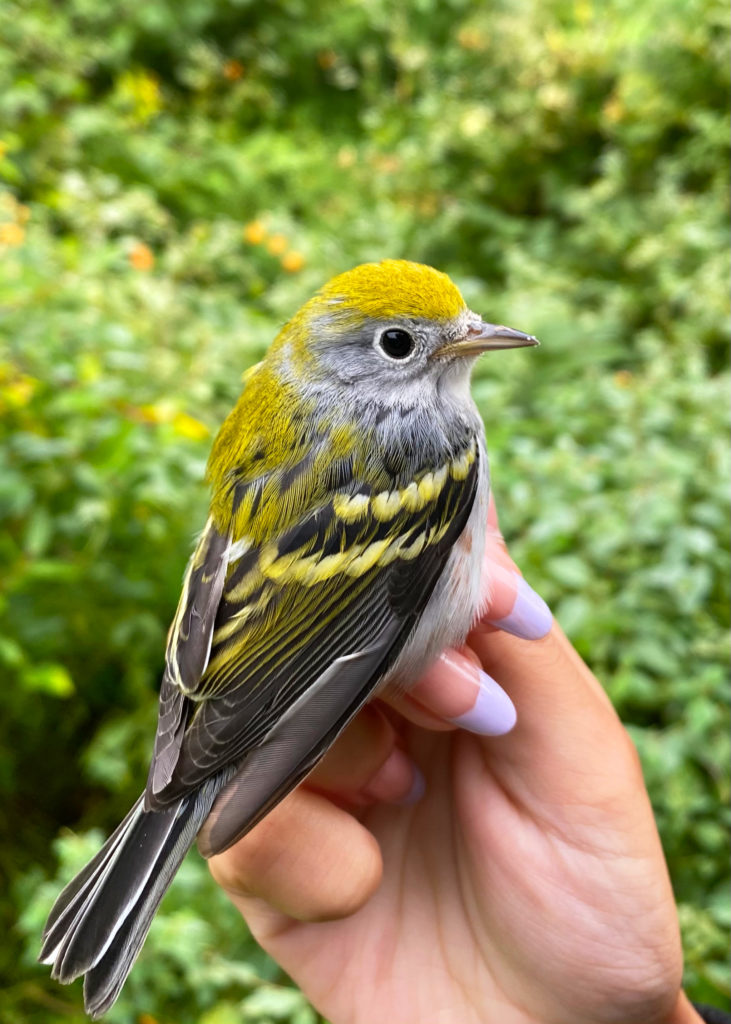
Wonderful article!
What a nice day. Diversity is always a bonus.